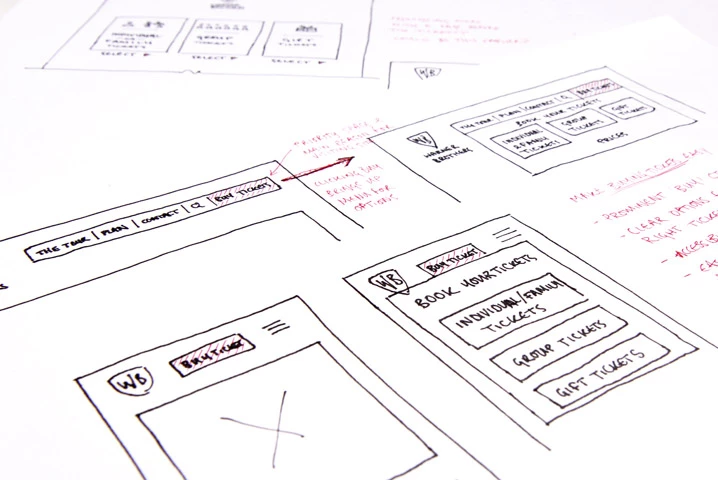
On the 3rd of April 2010, Steve Jobs stood on stage at the Apple conference and launched the first ever iPad. Infamously, Jobs announced that the iPad was ‘the best browsing experience you could ever have’- a bold statement indeed, if a little egoistic, but of course, we now know that Jobs was onto something.
It’s hard to imagine life without our touchscreen devices and they have undeniably changed the way we consume media and go about our daily lives. However, when the iPad was released, UX design as we now know it was in its infancy. Fast forward to less than 10 years later and UX design powers most of our lives without us even thinking about it.
Although we don’t give much thought to the everyday experiences we have with our devices or websites, a lot of effort goes into that experience. In the design industry alone, we spend hours of time thinking and developing new ways to get to that golden solution. The term ‘UX’ is, steadily, becoming increasingly familiar term, with the most successful and popular companies ingraining UX into their process and systems- and reaping the benefits.
So, yes. UX design is still important, and here’s why.
The Design Sprint Process
Last year Google Ventures Designer Jake Knapp released the book ‘Sprint: How to solve big problems fast.’. In it, Knapp recalls his experience at Google and clearly lays out the ‘sprint’ process which ‘anybody can use’ to help brainstorm ideas and arrive at a tangible solution.
I read the book (and loved it) and like many of my design counterparts have used this process with clients during the early days of UX exploration. However, it has almost become a victim of its own success. Where businesses would previously outsource this defining process, many are attempting to take on the challenge themselves. Ultimately, when budgets are tight and pressure is on, businesses can understandably start questioning ‘Why should I pay you to do this exploration, when I can do it myself?’. So how can us designers ensure there is ‘added value’ to the practice we preach?
Firstly, whilst one process works for one project, it doesn’t necessarily mean one size fits all. We need to make sure we aren’t overly reliant on any single process or approach. Otherwise, we risk creating an industry of designers which need to be told what to do rather than being able to think on our feet.
https://bulb-studios-new.mysites.io/wp-content/uploads/2017/12/healthia-ux-wireframe.webp
Look to fintech market disruptors
The rise of market disruptors such as Monzo provide a clear indication of why we shouldn’t underestimate the importance of innovation and process deviation. Previously, when faced with the challenge of adapting to rapidly evolving digital world, the major banking companies responded by giving users a digital version of their existing physical banking experience. Monzo have been so successful because they spotted a gap in the market, and took a totally different approach towards digital transformation. It’s something that is totally ingrained in their company culture and brand, as well as their product. Other banking apps didn’t give users all the power they needed to be fully in control of their money, whereas Monzo’s ‘radical transparency’ allows users to have immediate, total control over their finances and ultimately gives their users peace of mind.
It’s that ‘peace of mind’ that is engaging with users now. The ‘Digital Experience’ is no longer just defined by what a user experiences whilst using an application- it’s also about their experience outside of it. Monzo totally understood this and developed a solution around it. Had they been formuliac with their approach to user experience, they would have just produced another regurgitated banking app, but it’s about so much more than that. Lead Product Designer, Vuokko Aro explained how Monzo’s design team are constantly ‘adapting their process’ and stresses how even the most subtle improvements allow them to be that bit better than their competitors.
https://bulb-studios-new.mysites.io/wp-content/uploads/2023/04/MC-image-5.webp
Exhibit commitment to ethics
More and more companies are recognising the need to be more ‘responsible’- both in their physical and digital approach. A perfect example of this is Instagram’s ‘You’re all caught up’ feature; a small, but clear, adjustment which demonstrates their social awareness and proves they recognise the importance of their user’s time. Preventing users from endlessly scrolling through their feeds might sound counterintuitive to the app’s ultimate purpose, but by doing so, they have demonstrated that they are invested in the care of their users; this in turn this gives users peace of mind and causes them to fall in love with platform even more.
The demand is out there for more ethically considered solutions, and this needs to be adopted as part of our industry’s offering. As designers, it is crucial we keep the dialogue open and share techniques, so we can empower one another to produce better solutions that benefit both users and businesses. Rather than becoming superfluous to requirement, by encouraging innovation for the industry as a whole and striving for more ethical and considered design, we are better able to make solutions which really help a user. In the end peace of mind is the best experience of all.
https://bulb-studios-new.mysites.io/wp-content/uploads/2023/04/Aspire-to-HE-image-4.webp
Remain open to better usability
So, UX Design is as relevant as it ever has been, because our expectations for user experience are always increasing. We as users have largely grown comfortable with the most “usable” apps on the planet. We as developers and designers constantly seek to deliver the most forward-thinking solutions.
Our process remains entirely user-centric, keeping experience intrinsically linked to interface, and interface in keeping with the brand itself. To discuss how your brand could exist in a digital product, get in touch here.